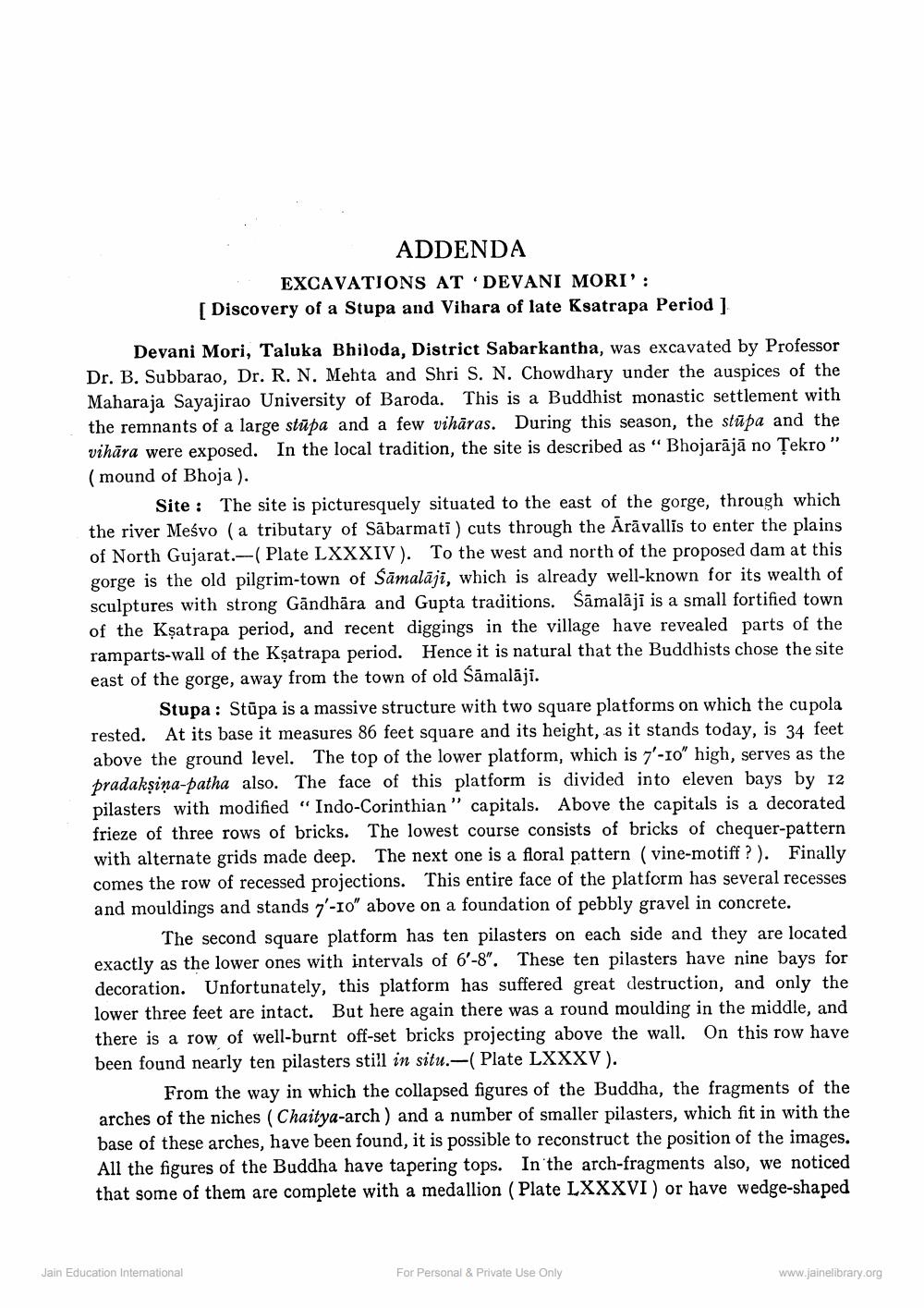________________
ADDENDA EXCAVATIONS AT DEVANI MORI': [ Discovery of a Stupa and Vihara of late Ksatrapa Period ]
Devani Mori, Taluka Bhiloda, District Sabarkantha, was excavated by Professor Dr. B. Subbarao, Dr. R. N. Mehta and Shri S. N. Chowdhary under the auspices of the Maharaja Sayajirao University of Baroda. This is a Buddhist monastic settlement with the remnants of a large stūpa and a few vihāras. During this season, the stūpa and the vihāra were exposed. In the local tradition, the site is described as “ Bhojarājā no Țekro" (mound of Bhoja ).
Site : The site is picturesquely situated to the east of the gorge, through which the river Meśvo (a tributary of Sabarmati) cuts through the Arāvallis to enter the plains of North Gujarat.-( Plate LXXXIV). To the west and north of the proposed dam at this gorge is the old pilgrim-town of Śāmalāji, which is already well-known for its wealth of sculptures with strong Gāndhāra and Gupta traditions. Šāmalāji is a small fortified town of the Ksatrapa period, and recent diggings in the village have revealed parts of the ramparts-wall of the Kșatrapa period. Hence it is natural that the Buddhists chose the site east of the gorge, away from the town of old Sämalāji.
Stupa : Stūpa is a massive structure with two square platforms on which the cupola rested. At its base it measures 86 feet square and its height, as it stands today, is 34 feet above the ground level. The top of the lower platform, which is 7'-10" high, serves as the pradaksiņa-patha also. The face of this platform is divided into eleven bays by 12 pilasters with modified “Indo-Corinthian" capitals. Above the capitals is a decorated frieze of three rows of bricks. The lowest course consists of bricks of chequer-pattern with alternate grids made deep. The next one is a floral pattern (vine-motiff?). Finally comes the row of recessed projections. This entire face of the platform has several recesses and mouldings and stands 7'-10' above on a foundation of pebbly gravel in concrete.
The second square platform has ten pilasters on each side and they are located exactly as the lower ones with intervals of 6-8". These ten pilasters have nine bays for decoration. Unfortunately, this platform has suffered great destruction, and only the lower three feet are intact. But here again there was a round moulding in the middle, and there is a row of well-burnt off-set bricks projecting above the wall. On this row have been found nearly ten pilasters still in situ.-( Plate LXXXV).
From the way in which the collapsed figures of the Buddha, the fragments of the arches of the niches (Chaitya-arch ) and a number of smaller pilasters, which fit in with the base of these arches, have been found, it is possible to reconstruct the position of the images. All the figures of the Buddha have tapering tops. In the arch-fragments also, we noticed that some of them are complete with a medallion (Plate LXXXVI) or have wedge-shaped
Jain Education International
For Personal & Private Use Only
www.jainelibrary.org




